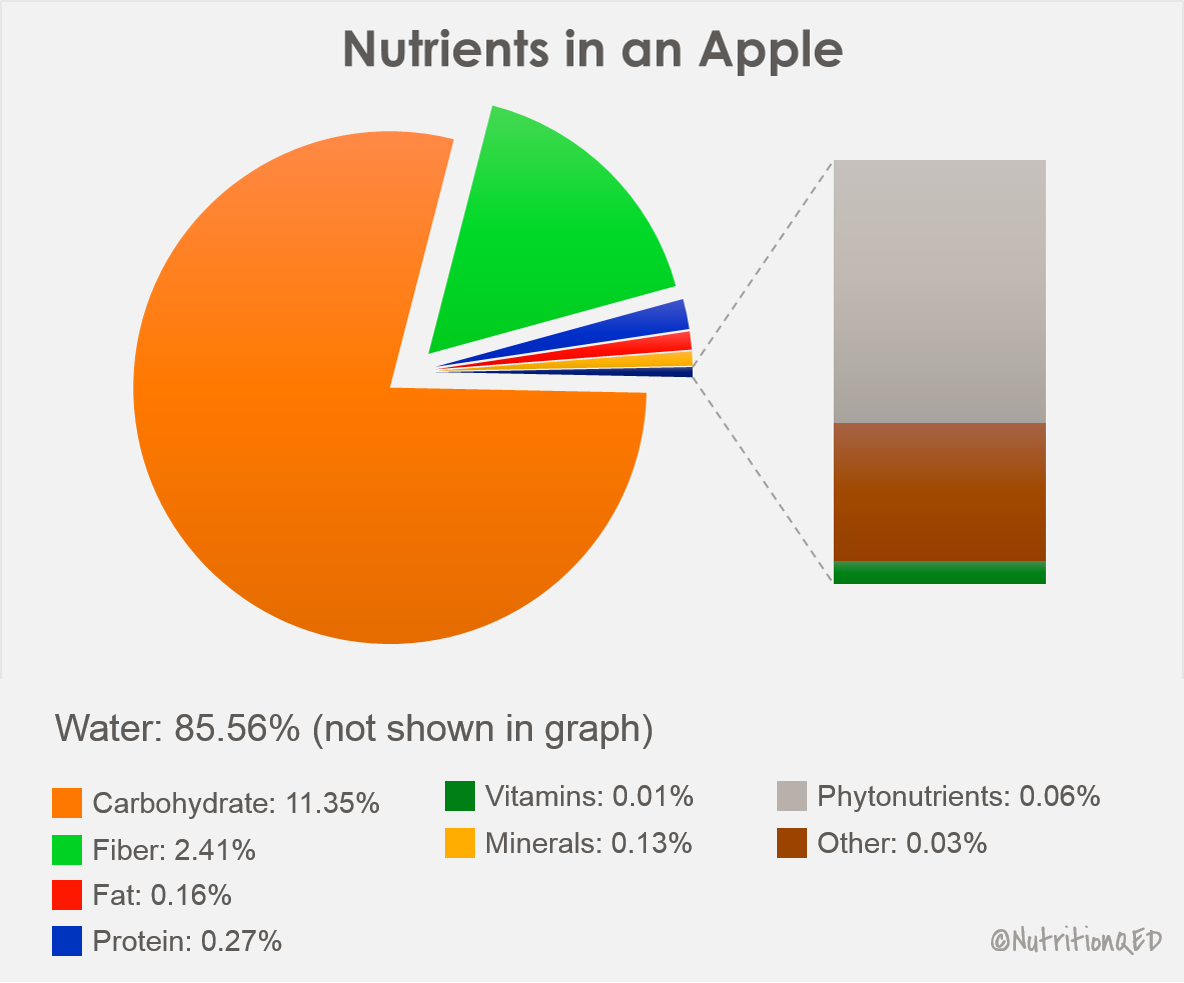Ever wondered what exactly constitutes “food”? Or hear about some type of nutrient and have no idea where to find it in your meal? According to the good old Merriam-Webster dictionary, food is merely “material consisting essentially of protein, carbohydrate, and fat used in the body of an organism to sustain growth, repair, and vital processes and to furnish energy.” But hold on—there’s so much more to the story, so much important information missing from that definition!
Real food is so much more than just carbs, fat, and protein. There are multitudes of nutrients in our food that are essential for complete wellness! Let’s discover this overlooked universe of vital components in our diet.

Marvelous Macros: The Body’s Building Blocks and Fuel Source
Macronutrients, or “macros” for short, are the main powerhouses of our diet. From carbohydrates (think grains and veggies) to fats (coconut, anyone?) and proteins (hello, ribeye!), these are the nutrients that we need in large amounts because they are the building blocks for our cells and they provide fuel for everything we do, from breathing to lifting weights.
Ever notice how fiber is always listed separately on nutrition facts labels? Technically, fiber is a carbohydrate, but it doesn’t contribute calories or cell building components the way other carbs do, so it’s best to think of it as a separate entity when aiming to meet nutrition goals.
Mighty Micros: The Tiny Superheroes of Bodily Health
Now, let’s zoom in on the micro world of vitamins and minerals. These tiny but mighty compounds are like the champions of our diet, supporting everything from immune function to bone health. With 14 vitamin groups and over 4,000 minerals out there (yes, you read that right!), it’s a nutritional treasure hunt to ensure we’re getting all the essential micronutrients our bodies need to function properly.
Phenomenal Phytonutrients: The Healing Power of Plants
Next, enter the colorful world of phytonutrients! Their flashy names—think quercetin from apples or hesperitin from grapefruit—may be difficult to say, but even without proper pronunciation, these compounds pack a powerful punch when it comes to protecting our health. From boosting immunity to fighting inflammation, phytonutrients are a secret weapon in our quest for optimal well-being.
Unfortunately, our knowledge about these nutrients is so limited right now that there’s no reference database for what to eat in order to be sure we are consuming enough! A good rule of thumb, however, is that all minimally processed plant foods contain them and the color of the food gives some indication of which types of phytonutrients are included.
Wonderful Water: The Unsung Hero of Nutrition
Last but certainly not least, let’s raise a glass to water—the unsung hero of health. Beyond quenching our thirst, water is essential for virtually every bodily function, from regulating body temperature to aiding in digestion. So don’t forget to hydrate—your body will thank you for it and you cannot be fully nourished without it!
Unlocking the Mystery of Essential Nutrients
Now, you might be wondering: what makes a nutrient “essential”? Simply put, these are the nutrients our bodies can’t produce on their own, so we rely on our diet to supply them. Take amino acids like phenylalanine—they’re essential for our well-being, but our bodies can’t whip them up from scratch. That’s where our food comes in, delivering the nutrients we need to thrive.
Other nutrients, like the amino acid tyrosine, aren’t essential. If we consume enough phenylalanine, our bodies can covert some of it into tyrosine, so getting it from food isn’t critical. Of course, this presumes your body can efficiently and effectively make the necessary conversions. But that is a topic for another time!
Beyond Nutrients: The “Other” in Our Food
If we were to create a chart that covered 100% of the components in food, we would inevitably have a section called “other.” This is the additional stuff in our food that is not considered nutrients, but still play a role in how our bodies function. From mineral-rich ash to digestive enzymes like lactase and papain, it’s like our food comes equipped with its own team of helpers, ensuring smooth sailing through from digestion to energy production.
Conclusion: Celebrating the Complexity of Real Food
In conclusion, the world of nutrition is far more intricate and fascinating than we often realize. From macros to micros, phytonutrients to water, our food is a symphony of nutrients working together to nourish and sustain us. So the next time you sit down to a meal, take a moment to marvel at the complexity of what you’re about to enjoy—it’s truly a wonder how Mother Earth provides everything our bodies need!
Image by Tonda Tran from Pixabay.
Sources:
— Boyer J, Liu RH. Apple phytochemicals and their health benefits. Nutr J. 2004;3(5),12.
— Gropper SS, Smith JL. Advanced Nutrition and Human Metabolism: 6th ed. Belmont, CA: Wadsworth Cengage Learning; 2013.
— Henneman K, Zidenberg-Cherr S. Some facts about phytochemicals. In Nutrition and Health Info Sheet for Health Professionals. Accessed March 3, 2015.
— McClements DJ. 4. Analysis of Ash and Minerals. Accessed March 3, 2015.
— Self. Apples, raw, with skin [Includes USDA commodity food A343]. In Nutrition Data. Accessed March 3, 2015.




